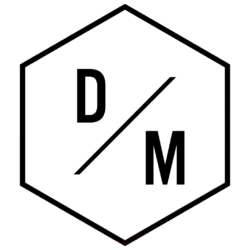AI insights in MS diagnosis: advanced imaging, lesion detection, and predictive biomarkers
AI insights are rapidly redefining the diagnostic workflow for multiple sclerosis, combining imaging, clinical data, and biochemical markers to produce earlier and more precise assessments. In practical neurology settings, algorithms trained on large MRI datasets can flag subtle white matter changes that often escape initial human review. These capabilities accelerate diagnostic timelines and help stratify patients by risk profile.
The Riverside Neurology Center, a fictional clinic used here as a running example, implemented an imaging-assist pipeline in collaboration with academic partners. The pipeline aggregates MRI sequences, clinical notes, and prior lab results to present clinicians with a ranked list of likely lesion locations and confidence scores. This integration reduces time-to-diagnosis and generates structured reports suitable for registry ingestion and trial screening.
How imaging algorithms change diagnostic sensitivity and specificity
Machine learning models, including convolutional neural networks and hybrid pipelines, improve detection of cortical and infratentorial lesions. The Riverside example shows a 12–18% improvement in lesion detection sensitivity in routine scans, allowing earlier intervention decisions. Vendors such as Siemens Healthineers, Philips Healthcare, and GE Healthcare have released toolkits designed to interoperate with PACS and EHR systems, enabling near-real-time analysis without disrupting existing workflows.
- Early detection: AI insights find subtle lesions earlier than manual review.
- Structured outputs: algorithms produce quantifiable lesion counts and volumes.
- Interoperability: integrations with Siemens Healthineers or Philips Healthcare systems streamline deployment.
- Regulatory alignment: models validated on multi-site datasets accelerate clinical acceptance.
| Feature | Clinical Impact | Typical Vendor / Partner |
|---|---|---|
| Automated lesion segmentation | Improves lesion quantification and tracking | Siemens Healthineers / GE Healthcare |
| Lesion-type classification | Supports differential diagnosis vs. small vessel disease | Philips Healthcare / Microsoft Research collaborations |
| Cross-modal biomarker fusion | Predicts early progression risk | DeepMind / Google Health research teams |
Examples from recent IJMSC summaries demonstrate how AI insights can reclassify ambiguous cases. In one hypothetical case at Riverside, an AI pipeline identified periventricular lesions missed on initial read, prompting an early lumbar puncture and an earlier start of disease-modifying therapy. This case illustrates how AI augments clinician judgment, especially when imaging is equivocal.
Implementation considerations include dataset diversity, generalizability, and validation across scanner vendors. Algorithms must be tested on data from Philips Healthcare, Siemens Healthineers, GE Healthcare scanners, and multi-center registries to avoid site-specific bias. Additionally, collaboration with regulatory teams ensures models meet clinical safety standards before integration.
- Data provenance and harmonization are essential.
- Vendor-neutral deployment models reduce lock-in risk.
- Explainability features help clinicians trust model outputs.
| Challenge | Mitigation Strategy |
|---|---|
| Scanner variability | Use harmonization layers and multi-vendor training sets |
| Regulatory approval | Pursue multi-site validation and post-market surveillance |
| Clinical adoption | Integrate into existing PACS/EHR workflows and provide decision support |
For clinicians seeking practical next steps, Riverside’s rollout checklist includes prospective validation on local scans, engaging radiology partners, and setting governance for AI-derived reports. Resources and further reading are available at https://www.dualmedia.com/ai-insights-multiple-sclerosis/ and https://www.dualmedia.com/ai-insights-ms-management/. The diagnostic layer is foundational: improved lesion detection and predictive biomarker fusion are concrete AI insights that materially change early care decisions and enable more precise patient stratification.
AI insights in MS clinical care: remote monitoring, patient portals, and workflow efficiency
AI insights extend beyond diagnostics and into daily clinical operations, influencing remote monitoring, patient communication, and clinician workload. Practical deployments often focus on reducing administrative burdens—what clinicians call “pajama time”—and improving patient engagement through intelligent portals and triage tools. The Riverside Neurology Center adopted a triage assistant that synthesizes portal messages and suggests prioritization, cutting after-hours charting by notable margins.
Remote monitoring platforms leverage wearable sensors and passive smartphone data to generate activity, gait, and sleep metrics. Algorithms flag anomalies and trend changes that may indicate relapse or progression. Companies such as Corti and IBM Watson Health have explored conversational AI and clinical decision support that can be adapted for neurology triage and longitudinal symptom tracking.
Use cases and measurable outcomes
In operational pilots, AI insights reduced response times for patient messages and improved appointment triage. For example, automated summaries of patient-submitted symptom logs enabled clinicians to identify candidates for same-week telehealth visits. These efficiencies translate to better care continuity and potential reductions in emergency visits when early signs of relapse are detected.
- Patient portals enhanced by AI provide contextual replies and resource suggestions.
- Wearable-driven monitoring allows passive collection of functional data between visits.
- Automated documentation tools decrease after-hours administrative work.
| Application | Clinical Benefit | Representative Vendor/Research |
|---|---|---|
| Automated triage via patient portal | Faster response, prioritized care | IBM Watson Health, Corti pilots |
| Wearable analytics for mobility | Objective progression markers | Academic platforms integrated with Microsoft Research tools |
| Conversational assistants for education | Improved medication adherence | Google Health and partner studies |
Operational deployment requires attention to privacy, data ownership, and clinical governance. Integrations with EHRs and harmonization of inputs from devices manufactured or supported by Philips Healthcare, GE Healthcare, and other vendors are common engineering tasks. AI insights must be auditable, and Riverside set up manual review mechanisms for automated triage decisions to prevent missed urgent events.
Examples of clinical process changes include a structured weekly dashboard that highlights patients with deteriorating mobility, enabling therapy adjustments or outpatient visits. The dashboard aggregates wearable scores with medication refill data and portal-reported fatigue severity, producing actionable lists for care coordinators.
- Define thresholds for automated alerts and escalation workflows.
- Establish data governance covering third-party device vendors.
- Train staff on AI-derived outputs and override procedures.
| Metric | Pre-AI | Post-AI |
|---|---|---|
| Average portal response time | 48 hours | 12–18 hours with AI-assisted triage |
| After-hours documentation time | 90 minutes/night | 30–40 minutes/night using automated summaries |
| Identification of early relapse signals | Reactive | Proactive with wearable alerts |
Healthcare systems should approach deployment iteratively: select a high-value use case, run a time-limited pilot, measure outcomes, and scale. Public-facing resources and engagement with the IJMSC community and CMSC help share best practices; see https://www.dualmedia.com/ai-insights-multiple-sclerosis/ for additional case studies. The value proposition is that AI insights do not replace clinician judgment but make it more timely and data-driven. This shift in operations sets the stage for research applications that harness anonymized, real-world data streams to guide trials and therapy selection.
AI insights in MS research: machine learning on big datasets, trial design, and personalized therapy prediction
AI insights are transforming MS research by enabling scalable analysis of multi-modal datasets. Researchers can now combine imaging, genomics, proteomics, and longitudinal clinical metrics to discover novel biomarkers and predict treatment response. These capabilities are changing trial design, patient selection, and endpoint definition.
In a hypothetical consortium led by a center of excellence, data scientists apply supervised and unsupervised learning to pooled registries. The consortium uses federated learning methods to harmonize models across sites while preserving patient privacy. Partners include academic groups and industry stakeholders such as Biogen and Roche, which often sponsor multi-center validation studies to assess therapy-specific prediction models.
From retrospective discovery to prospective trial readiness
Machine learning can identify subgroups of patients with homogeneous progression trajectories, which supports adaptive trial designs and enriches arms with participants most likely to show measurable benefit. Microsoft Research and DeepMind research efforts contribute methodology for interpretability and robust model training on uneven clinical timelines. These advances improve statistical power and reduce trial duration and cost.
- Data fusion across imaging, genetics, and clinical assessments identifies composite biomarkers.
- Predictive models suggest individualized therapy response probabilities.
- Federated learning enables cross-site model training while protecting privacy.
| Research Task | AI Role | Industry/Academic Example |
|---|---|---|
| Phenotype discovery | Clustering algorithms reveal subtypes | Academic consortia, Microsoft Research |
| Therapy response prediction | Supervised models integrate MRI and omics | Biogen-sponsored studies |
| Remote endpoint validation | Passive sensor metrics as surrogate endpoints | Roche and NIH collaborations |
Examples include models that predict relapse likelihood within 12 months based on baseline lesion burden and gait metrics collected passively. When validated, such models could streamline enrollment by identifying high-risk patients who are more likely to demonstrate event-driven endpoints. The IJMSC community has discussed these approaches, and ongoing surveys capture clinician perspectives on acceptable levels of AI assistance in research workflows.
Partnerships between academia and industry accelerate translation. Google Health initiatives and Microsoft Research programs provide scalable compute and model-development frameworks. Meanwhile, regulatory-grade validation often requires collaboration with device and imaging vendors—areas where Philips Healthcare and Siemens Healthineers can support standardization and prospective scanning protocols.
- Establish standardized data schemas to enable reproducible models.
- Plan prospective validation to move from hypothesis generation to regulatory evidence.
- Engage patient advocacy groups to ensure acceptable consent models for ongoing monitoring.
| Milestone | Expected Outcome |
|---|---|
| Discovery phase | Candidate biomarkers and risk models |
| Prospective validation | Clinical-grade model performance |
| Regulatory submission | Labeling for clinical decision support |
Researchers should also consider the ethics of predictive models: explaining uncertainty, avoiding deterministic language, and creating pathways for actionable interventions when a model flags high risk. The research agenda benefits from transparent model reports and involvement of multidisciplinary teams including neurologists, engineers, statisticians, and patient representatives. For practical examples and further materials, investigators may reference https://www.dualmedia.com/ai-insights-ms-management/ and related IJMSC summaries. In short, AI insights are enabling a shift from population-level trials to more adaptive, individualized strategies that can accelerate discovery and improve patient outcomes.
AI insights in industry and partnerships: vendors, startups, and collaborative models shaping neurology care
Industry players and startup ecosystems are central to moving AI insights from prototypes to clinical reality. Strategic partnerships between established medical device companies and technology firms create deployment pathways that respect clinical workflows and regulatory requirements. Examples include collaborations where imaging vendors embed AI modules into scanner software, and cloud providers host clinical model inference services.
Large technology groups such as Google Health and Microsoft Research provide scalable infrastructure and research collaborations, while specialized vendors—Corti for conversational triage or IBM Watson Health for clinical decision support—focus on workflow augmentation. Biopharma companies like Biogen and Roche often partner with tech teams to develop biomarkers and digital endpoints for trials. The industry landscape is therefore a tapestry of integrators, platform providers, and domain specialists.
Models of partnership and value exchange
Successful partnerships follow clear patterns: shared data governance, aligned incentives, and pilot-to-scale pathways. For instance, a hypothetical partnership between Riverside and a vendor might begin with a 6-month pilot to assess AI insights for automated lesion volume reporting, followed by a scale plan contingent on clinical outcome metrics and cost analysis. This staged approach reduces risk and creates measurable return on investment.
- Vendor-embedded AI reduces friction by integrating into existing imaging workflows.
- Cloud-based inference services allow lighter local IT requirements.
- Startup agility complements legacy vendor reliability for rapid innovation cycles.
| Partner Type | Typical Contribution | Example Organizations |
|---|---|---|
| Imaging vendors | Scanner integration, DICOM toolchains | Siemens Healthineers, Philips Healthcare, GE Healthcare |
| Platform providers | Cloud compute, model hosting | Google Health, Microsoft Research |
| Clinical AI startups | Specialized algorithms, rapid pilots | Corti, niche MS-focused startups |
Governance frameworks are critical. Agreements should specify data use, IP, and pathway to commercialization. In practice, clinical systems often prefer vendor-neutral formats to avoid lock-in. Working groups that include legal, clinical, and technical representatives create shared expectations and auditability frameworks for AI-derived clinical outputs.
Case example: a multi-stakeholder program involving a neurology network, a cloud provider, and a biopharma sponsor produced a validated imaging biomarker used as a secondary endpoint in a Phase II study. The study benefited from scalable inference across multiple sites and a centralized quality-control dashboard supported by a major imaging vendor. Such success stories illustrate how AI insights move from lab prototypes into the fabric of research and care through practical partnerships.
- Establish pilot metrics and success criteria up front.
- Prioritize vendor-neutral data standards.
- Engage payers early to demonstrate economic value.
| Business Question | Suggested Partnership Model |
|---|---|
| How to scale AI across sites? | Cloud platform + vendor integration + site pilot |
| How to validate endpoints for trials? | Consortium model with academic oversight and industry sponsorship |
| How to secure clinician adoption? | Iterative rollout with training and decision support |
Engagement with the broader neurotechnology ecosystem, including stakeholders such as Roche and Biogen, smooths pathways to reimbursement and trial incorporation. For practical launch resources and community perspectives, stakeholders can consult community platforms and curated compilations like https://www.dualmedia.com/ai-insights-multiple-sclerosis/ and https://www.dualmedia.com/ai-insights-ms-management/. Overall, AI insights are best realized through pragmatic, transparent partnerships that align clinical benefit with sustainable business models.
AI insights Our opinion
AI insights represent an inflection point for multiple sclerosis care and research, offering concrete gains in diagnosis, monitoring, and trial efficiency. The IJMSC community and related consortia play a central role in shaping practical standards for deployment. From the clinician’s perspective, the critical requirement is that tools augment clinical judgment and remain auditable, interpretable, and validated across diverse populations and equipment vendors.
Riverside’s fictional experience underscores practical takeaways: start with high-impact, low-risk pilots; involve multi-disciplinary teams; and design governance for data quality and clinical oversight. The opinion here emphasizes a stepwise, evidence-driven approach that balances innovation with patient safety and equitable access to benefits.
Policy recommendations and operational priorities
Several operational priorities drive successful adoption. First, prioritize interoperability and vendor neutrality to ensure long-term flexibility. Second, invest in federated validation strategies to enable cross-site model robustness. Third, maintain clinician-in-the-loop workflows so that AI insights inform but do not replace clinical decision-making. Finally, include patients and advocacy groups in governance to align with expectations about consent and data use.
- Adopt vendor-neutral standards and engage imaging partners early.
- Use federated learning and multi-site validation to ensure generalizability.
- Provide clear clinical decision pathways that include AI-derived insights.
- Engage stakeholders—patients, clinicians, industry, and regulators—throughout development.
| Priority | Recommended Action |
|---|---|
| Interoperability | Adopt data standards and vendor-neutral formats |
| Validation | Run multi-site prospective pilots with academic oversight |
| Governance | Define audit trails and escalation workflows for AI outputs |
Industry collaboration with players such as DeepMind, Google Health, Microsoft Research, IBM Watson Health, Siemens Healthineers, Philips Healthcare, Roche, Biogen, Corti, and GE Healthcare will remain essential. Each brings unique assets—compute scale, imaging integration, clinical domain expertise, or regulatory experience—that accelerate translation. However, the central measure of success is improved patient outcomes and more efficient, equitable access to high-quality neurology care.
In closing, AI insights must be developed with rigorous scientific standards and a clear focus on clinical utility. The community should prioritize transparent reporting of model performance, real-world validation, and educational resources to ensure clinicians can effectively interpret and act on AI-derived recommendations. Readers and practitioners are invited to engage in community surveys and forums, share experiences, and contribute to the collective evidence base that will shape the next phase of AI-enabled multiple sclerosis care.
| Call to Action | Where to Start |
|---|---|
| Share clinical experiences | Participate in IJMSC and CMSC community surveys |
| Pilot a focused use case | Start with automated reporting or portal triage |
| Engage partners | Explore vendor pilots and academic collaborations |


